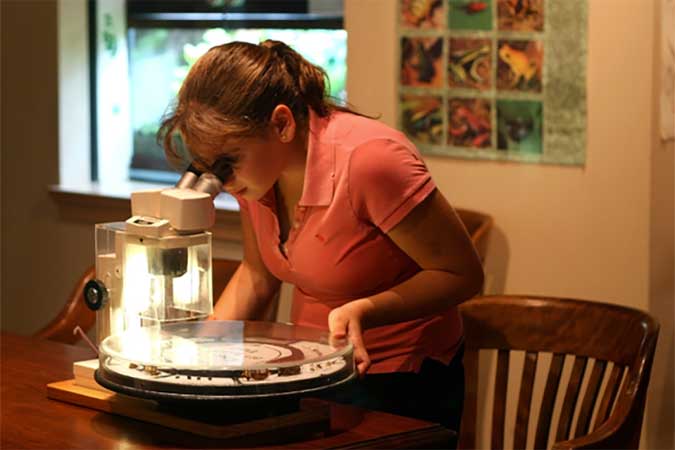
Here are four things to keep in mind when designing solutions that aim to engage girls in STEM-related topics
 Just 12 percent of U.S. engineers are women, according to the American Association of University Women—and the percentage of computer programmers who are women has fallen from 35 percent in 1990 to just 26 percent in 2010.
Just 12 percent of U.S. engineers are women, according to the American Association of University Women—and the percentage of computer programmers who are women has fallen from 35 percent in 1990 to just 26 percent in 2010.
There are many reasons for the disparity, but some of them can be traced back to the experience of girls in STEM-related courses as early as middle school. Although girls and boys show no real differences in their math or science abilities, research suggests that many girls begin to lose interest (and confidence in their abilities) in math and science in the middle grades.
The way curriculum solutions are designed can make a big difference in how well they engage girls in STEM-related subjects. Here are four research-based strategies for designing more gender-inclusive curriculum resources.
- Create an environment that fosters curiosity.
“Girls enjoy hands-on, open-ended projects and investigations.” That’s according to the “SciGirls Seven,” a guide to the principles behind the PBS television show SciGirls, which aims to engage middle school girls in STEM disciplines.
The same conclusion was reached by the U.S. Department of Education’s Institute of Education Sciences in its 2007 report, “Encouraging Girls in Math and Science.” One of that report’s recommendations was to create a classroom environment that “sparks initial curiosity” while fostering long-term interest in math and science.
What can curriculum designers take from these observations? Designing inquiry-based activities that don’t have simple right-or-wrong answers can get students thinking more deeply about the content—which can benefit all students, engaging girls as well as boys.
- Make projects relevant and meaningful.
“Girls are motivated by projects they find personally relevant and meaningful,” SciGirls says. A gender-inclusive curriculum embeds problems and activities in contexts that are interesting to both boys and girls.
Look for ways to connect material to girls’ lives. Use real-world problems and scenarios in your curriculum, including actual case studies taken from authentic situations. “Kids generally relate to characters who face decisions or dilemmas; they often make connections from the story to their own lives,” SciGirls says.
- Incorporate various learning styles and opportunities for creativity.
“Girls are motivated when they can approach projects in their own way, applying their creativity, unique talents, and preferred learning styles,” SciGirls says. In your curriculum and assessment solutions, encourage students to communicate their findings using a variety of techniques, including writing, reflection, and other methods that tap into their creative spirit.
- Expose girls to positive female role models in STEM-related careers.
Incorporate videos of women scientists and engineers discussing their work. Include biographical information about women in STEM careers. And “call attention to current events highlighting the achievements of women in math or science,” the IES report advises.
The more young girls see examples of successful women in STEM fields, the more “normal” excelling in math and science will seem to them.
Designing gender-inclusive curriculum and assessment materials is critical to ensuring that girls have the same opportunities as boys in STEM-related pursuits. For more information about engaging girls in STEM activities, check out this web page from the National Girls Collaborative Project.
